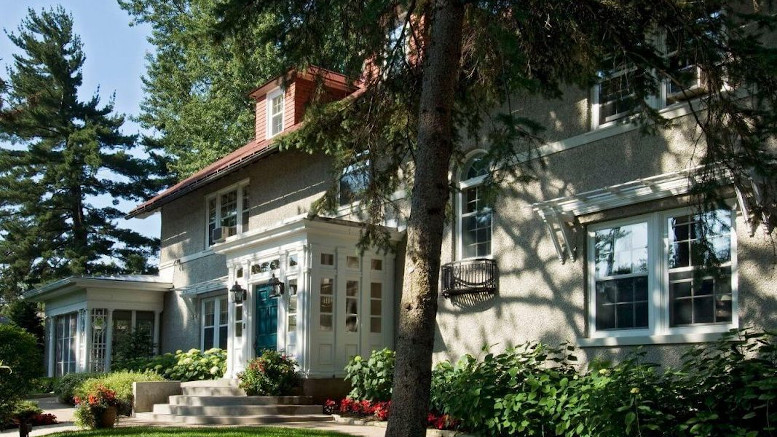Since the resignation of Stephen Harper in 2015, Canada’s Conservative Party has had four leaders. Again, it is looking for a new leader. Erin O’Toole, elected to head the party by its membership just 17 months before, was voted out of that position by 73 of the Conservative Party’s 119 MPs in an online caucus meeting on February 2.
Although O’Toole did himself no favours with his allegedly high-handed leadership style, the fundamental issue for most of his detractors was he was not conservative enough in the federal election of 2021. In the 2020 leadership campaign, he positioned himself to the right of big business’s favoured candidate and front-runner Peter MacKay. His claim to be a “true blue conservative” helped him attract most of the votes of social conservative candidates Leslyn Lewis and Derek Sloan after they had been eliminated on the second and first ballots, respectively. A technology breakdown meant that O’Toole’s third-ballot victory over MacKay was not announced until the early hours of the morning, ensuring that his tenure started as a low-profile event.
After becoming leader in August 2020, in the midst of COVID, O’Toole moderated his tone and even tried to portray the Conservative Party as a home for working-class and unionized Canadians. His decision that Conservatives would support legislation to ban so-called “conversion therapy,” a term for a number of homophobic/transphobic and scientifically discredited practices purportedly designed to “turn people straight,” annoyed some on the far right of the party. He also expelled Sloan from the party after it was revealed that Sloan had taken a leadership campaign donation from white supremacist Paul Fromm.
O’Toole tried to get the party to accept that climate change was real, but its conference in March 2021 rejected a resolution stating that “we recognize that climate change is real. The Conservative Party is willing to act.”
In the federal election of 2021, O’Toole tried to move the party towards the centre, hoping to win seats outside of the Tories’ stronghold on the Prairies, especially in suburban Toronto. He abandoned several promises in the election manifesto including a promise to repeal controls on gun ownership. The Conservatives also promised to build one million homes in three years (although not explaining how or if they would be affordable) and $50 billion in new spending, mixed with strange and complex tax breaks and incentives. These manoeuvres, though they briefly looked as if they may pay off in the election campaign, ended up doing as much harm as good — the Conservatives ended with exactly the same number of MPs coming out as they’d had going in.
O’Toole helped to dig the final shovelfuls of his leadership’s grave in its final days, by flip-flopping on whether to meet with convoy protestors (first saying that he wouldn’t, later that he would), then portraying his detractors in the Conservative caucus as wanting to drag the party into its past, and finally through a pandering and desperate final speech to his caucus that accomplished nothing but souring some undecided members against him with a final confirmation that he would twist himself into any political shape he needed to.
The momentum in the Conservative Party is definitively with the party’s more extreme right wing. Immediately after dumping O’Toole, the Conservative MPs elected Manitoba MP Candice Bergen as interim leader. She supports the convoy outside of Parliament, saying there’s “good people on both sides,” is against women’s right to choose, and voted against the conversion therapy ban. One week after becoming interim leader she announced the Tories were scrapping their commitment to put a price on carbon. Liberal activists have widely disseminated a photo of her sporting a “Make America Great Again” hat.
So far, only Ottawa-area MP Pierre Poilievre has announced he is running for leader of the party. He has visited the convoy saying, “I’m showing up here to support freedom.” He was raised in Alberta and was a young Reform Party volunteer on Jason Kenney’s first campaign,, and then worked for Canadian Alliance leader Stockwell Day. He is popular with the social conservatives in the party and may be able to ride them to a leadership win.
The first battle of the new leadership race may be over the timing of the vote. A short campaign will allow the right’s current momentum to continue and will favour candidates already known to the party base and established in party circles, such as Poilievre. A longer campaign will allow more moderate candidates to make a name for themselves and court big business, elements of which will want a more “electable” leader and will be willing to pick up the tab. The party’s president, Scott Batherson, has so far only said that the vote will take place sometime in 2022.
Dozens of Conservative MPs, and a significant minority of the party’s membership, want to impose restrictions on abortion, and will almost certainly get a big boost from the likely overturn by the United States Supreme Court of Roe v. Wade. That could inspire at least some limited efforts to curtail abortion rights in Canada.
Is the Conservative Party tenable, in the current era, as a unified political force? The recent history of Britain’s Conservative Party would raise doubts on this subject. Though they currently have a majority government, UK prime minister Boris Johnson is hanging by a political thread over not just a scandal around breaking COVID rules, but his handling of the pandemic generally, Brexit, and the economic pressures resulting from both. The British Tories are divided in a similar way to the Canadian party, between moderates and hardliners. Both there and here, fundamental splits along those lines are possible.
The Conservatives now have an external pressure on their right flank in the form of Maxime Bernier’s People’s Party of Canada (PPC), which has wholeheartedly embraced the ongoing protests and other right-wing causes. Since its foundation in 2018, the PPC has grown to 30,000 members, including former Conservative Party members who disagreed with not just O’Toole but his further-right predecessor Andrew Scheer, who narrowly defeated the then-Conservative Bernier for the party’s leadership in 2017. Some in the Conservative Party will be repulsed by the PPC, while others will seek to co-opt their views to try to bring the hard right (and their energy and votes) in.
The political centre in Canada, dominated by the Liberal Party, has proved more resilient than in most other countries. For a time, some Canadians may even reinforce this centre in repulsion of the advances of the right and far right. Trudeau is trying to capitalize on this with his tough language about the current protests. But the half-remedies of capitalism that the Liberals offer will, in the long run, strengthen the right. The failure to address real anger and discontent will drive people to one pole or the other. It’s the task of the left to ensure that it is the more attractive one.



